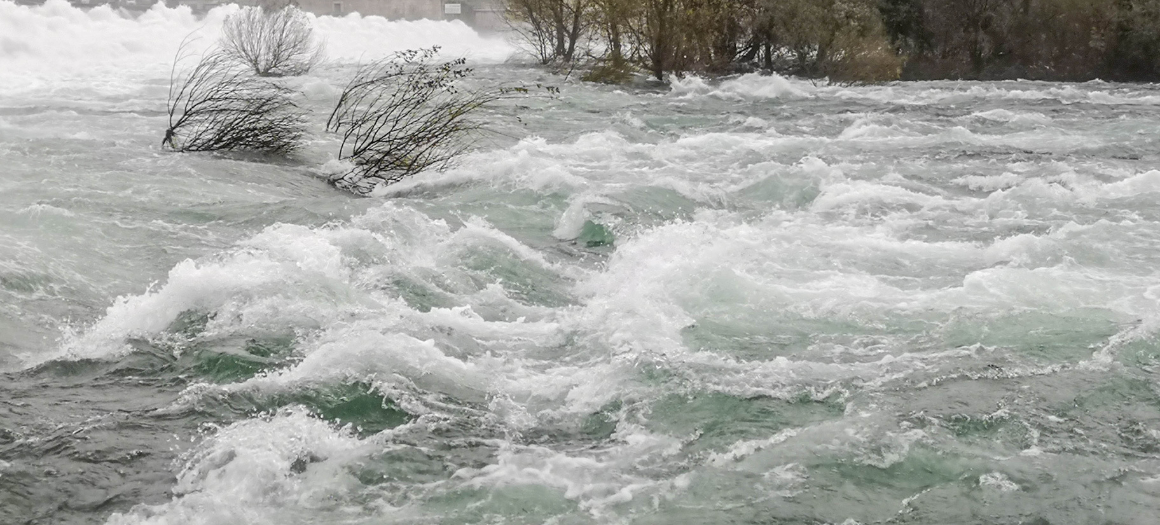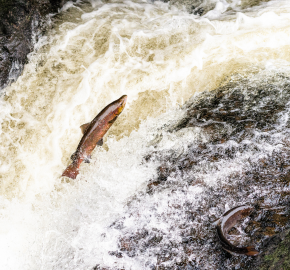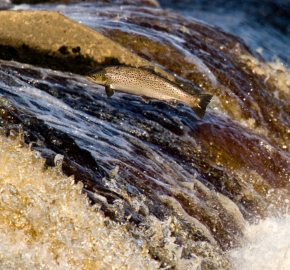Winter storms and wildlife – what’s going on beneath the surface?

Winter has well and truly arrived, bringing with it shorter, colder and wetter days.
Extreme storms which bring gale-force winds and dramatic flooding have in recent years become a regular winter occurrence in the UK. This year we have already seen the effects of Storm Babet, during which eight people lost their lives and over 1,000 homes were evacuated across Scotland, Derbyshire and Yorkshire due to flooding, power cuts and falling trees. Storm Ciarán swiftly followed leaving thousands across Surrey and the Southwest without water.
The changing nature of UK weather
The State of Climate Report has shown that weather events in the UK are becoming more extreme, with hotter drier summers and milder, wetter winters. In the past decade (2013–2022) UK winters have been 10% wetter than 1991–2020 and 25% wetter than 1961–1990 (Kendon et al., 2023).
As we prepare for what could be another exceptionally wet winter, heightened pressure is going to be placed on our aquatic ecosystems.
The exceptionally hot early summer of 2023 increased stressors for wildlife in our lakes and rivers with low flow conditions increasing water temperatures, leading to deoxygenation, eutrophication and mass fish kills across the country (WildFish, 2023). Now intense winter precipitation events such as storms Babet and Ciarán bring a new host of challenges:
1. High rainfall events
High rainfall increases the likelihood of combined sewage overflows (CSOs) discharging effluent directly into our rivers. Our sewage infrastructure cannot cope with the increase in population let alone additional pressure from climate change. We urgently need water companies to invest in infrastructure so that they can treat sewage in anything other than exceptional rainfall – as the law requires. Failure to apply and enforce the law has created a capacity shortfall which results in sewage being dumped when it is not raining let alone in exceptional rainfall.
2. Increased run-off
Wetter winters also increase runoff from urban and agricultural areas. Road dust containing heavy metals, plastic litter, phosphates and nitrates from fertilisers and toxic insecticides all freely wash into our rivers during heavy rainfall.
Phosphates have been found to increase in concentration during storm events when mobilised from soil erosion or surface runoff. Particularly likely during UK winters as soils become saturated by prolonged periods of rainfall (Mellander et al., 2018). However, in the case of point source pollution from sites such as water treatment works increased precipitation may mean that some pollutants can be more effectively diluted in higher river flows, reducing their overall environmental impact. The scientific literature is contested over issues such as microplastics, as flooding can flush plastic already in the river out to sea, but equally it opens new pathways for plastics to enter rivers from urban and industrial areas (Hitchcock, 2020; Hurley et al., 2018). Both possibilities are bad news for our riparian and marine wildlife. The plastic will end up in rivers or the sea regardless, taking 100s of years to decompose.
3. Warmer temperatures
Warmer winter temperatures also disrupt the lifecycle of many fish species, which are adapted to survive the historically cooler winters in this country. Warmer winter temperatures cause fish species to migrate northwards in search of cooler waters and pave the way for new species (sometimes invasive) to colonise, outcompeting or directly preying on UK fish populations.
Warmer winter temperatures are changing the timing and success of salmonid spawning, as snow formation is occurring later and snow melt taking place earlier (Vehanen et al., 2023). Reduced ice formation and coverage (from higher winter temperatures or increased river flows during storms) also decreases juvenile salmonid survival chances. Salmon have been observed to expend 30% less energy under ice cover, allowing them to catch more prey, grow larger and navigate stronger river flows during stormy periods (Finstad et al., 2004).
4. Storms growing in intensity
More intense winter storms can damage the fragile habitats on which migratory fish depend for spawning. High winter river flows, floods and spates can damage or remove gravel beds on which fish create their redds to lay their eggs. This was proposed as one possible reasoning for the salmon stock crash on the River Carron in Scotland during the 1990s, where an artificial stocking program was introduced due to the severity of salmon population decline following a series of particularly intense spates (River Carron Conservation Association, 2022). Winter floods can be especially damaging to salmonids as they spawn around November or December, leaving their eggs vulnerable to being washed away by high flows even if the gravel redds survive.
5. High water volumes
There is further evidence that high flows shortly after emergence of fry can lead to increased mortality in populations, as they can be washed out of the river or downstream into saline waters they are not yet adapted for (Atlantic Salmon Trust, 2016). Salmonid parr prefer relatively slow flow rates in the winter as the ability of the young salmonids to swim against strong currents is poor at low temperatures (Vehanen et al., 2023).
Suspended sediments in the water column, mobilised by winter storms or introduced into river systems due to increased erosion also decrease the likelihood of juvenile salmonid survival, as eggs can become smothered by sediment and deprived of oxygen, plus increased turbidity decreases juvenile fishes’ ability to locate and catch prey (Bash et al., 2001).The timing of winter floods can greatly impact salmonid populations especially at the vulnerable lifecycle stages.
A new and growing pressure
Changing winter weather patterns put further pressure on already struggling populations of salmonids in the UK. A particularly bad storm could push already struggling localised populations over the edge.
Much of the environmental damage occurring due to climate change is unseen here in the UK. Where melting ice sheets and continental forest fires are sobering examples of its extreme effects abroad, similar levels of environmental degradation are taking place in the UK, they just might be harder to spot.
As we brace for more stormy weather this winter, please spare a thought for our unseen wildlife below the surface – as evidenced it’s a turbulent time for them too.
Please click here for a full list of the references used in this blog post.




